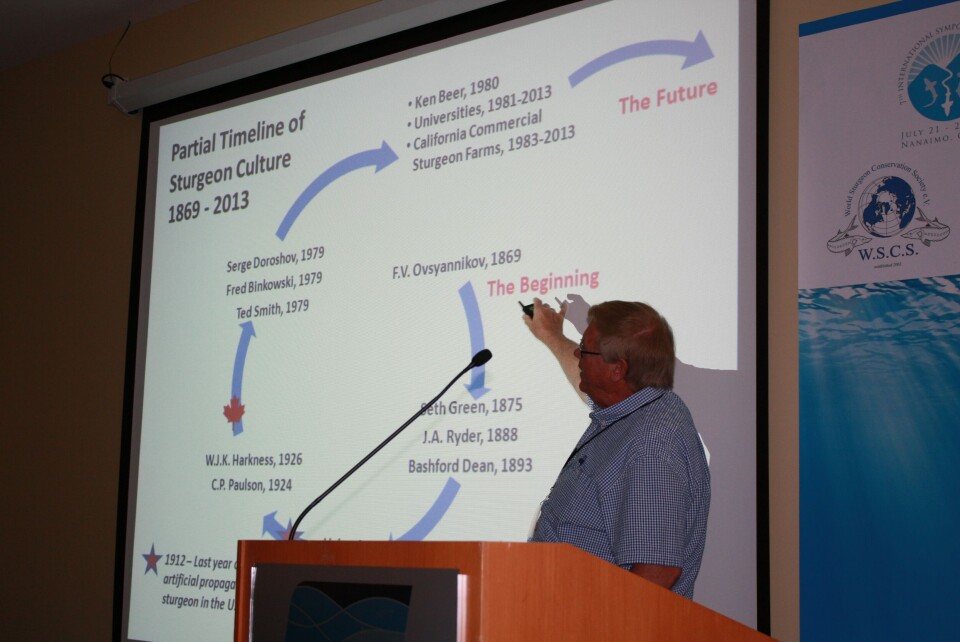
Sturgeon conference gets underway on Vancouver Island
The Chair of the ISS7, Don Tillapaugh told FishfarmingXpert that about 350 delegates from all corners of the Sturgeon World are in attendance for the four day conference, whose title is Sturgeon, Science and Society – at the Crossroads: Meeting the Challenges of the 21st Century. Today, one of four concurrent sessions dealt with issues around sturgeon aquaculture. Tomorrow also has a similar program segment, which starts with a presentation by Jørn Ulheim of the Norwegian company Cryogenetics entitled “Towards successful cryopreservation of sperm from the White sturgeon, Acipenser transmontanus”. The company has a facility on Vancouver Island, serving both the fish farming industry and conservation initiatives.
The program today started with a presentation by Mr. Frederick Binkowski of the University of Wisconsin‐Milwaukee School of Freshwater Sciences, who in his talk forgot one important initiative- the Target Marine Product’s facility north of Vancouver which is getting renowned for its production of “Northern Divine“ caviar made from home grown White sturgeon. Mr. Binkowski’s presentation was entitled “North American pioneers in sturgeon culture”;
The history of sturgeon culture in North America dates back to the late 1800’s. The importance placed on developing the husbandry technology to propagate sturgeon can be underscored by the statement, “there is no subject in fish culture, except for the lobster, that was given more time and thought to than the artificial propagation of sturgeon.” The first efforts to propagate sturgeon artificially in America were made in 1875 on the Hudson River when Seth Green hatched eggs of the Atlantic sturgeon, Acipenser oxyrhynchus.
In 1888 work was conducted by J.A. Ryder at the University of Pennsylvania on the Delaware River, again using the Atlantic sturgeon. The results were to some extent unsatisfactory, owing to the difficulty of obtaining living ova and the difficulties in fertilization, as well as incubating the eggs. The first recorded attempt to propagate lake sturgeon artificially was made on the Detroit River in 1890 and then on the St. Clair River. In 1900 the US Fish Commission set up a workstation on Lake Champlain where good spawning migrations were found on two tributary streams, the Missisquoi and Lamoille Rivers.
As interest grew throughout North America, attempts to artificially propagate lake sturgeon began in the Lake of the Woods region, which was one of the most productive areas for collecting wild broodstock. However, the published record in the United States shows that 1912 appears to have been the last year in which active steps were taken to develop the husbandry technology for the artificial propagation of lake sturgeon. In the 1920’s Harkness and Dymond conducted several efforts to artificially propagate lake sturgeon, but obtained similar results as their colleagues experienced before them.
From the mid 1920’s until the late 1970’s there was almost no effort to culture sturgeon. Modern state‐of‐the‐art husbandry technology for the propagation of sturgeon in North America began in 1979. On the east coast Atlantic and Shortnose culture began; in the Great Lakes it was Lake sturgeon and on the west coast it was White and Green sturgeon. Today these programs are recognized as the benchmark for sturgeon culture technology in North America.






















































